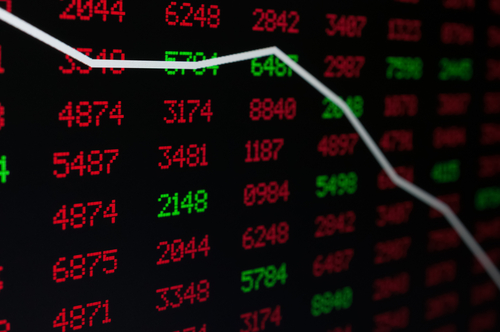Experienced Investor
UK plc dividends under pressure as profits tumble

Falling corporate profits are putting dividend payments under pressure, a new study reveals.
The ‘dividend cover’ of the top 350 listed UK firms, a measure which shows how affordable and sustainable company dividends are, has hit a near six year low, according to research by The Share Centre.
Dividend cover is a ratio defined by profit after tax divided by dividends paid. The higher the ratio, the greater the comfort that a company can afford, and can sustain, its dividend payouts. A lower ratio means a cut in the dividend is more likely if profits fall.
The research shows that dividend cover has fallen to 1.2x, down from 1.5x 12 months ago.
Based on profits of £102.8bn made by the UK’s top 350 listed firms in the year to the end of March 2015, dividend cover is now at its lowest level since the third quarter of 2009, when it stood at just 0.7x.
Profits of the UK’s largest firms were down £16.8bn year-on-year in quarter one due to a series of global and sector difficulties, from the currency headwinds to commodity price falls, and most recently, the supermarket price war.
Sector specific trauma
Only three industries’ dividend cover improved in the past year, while seven saw them fall.
Oil & gas and consumer services companies saw the largest falls in their dividend cover, after the plunging oil price and the supermarket price war took their respective tolls on profitability.
The consumer services group – including supermarkets – saw dividend cover fall from 1.4x to 0.6x in the last year. Although dividends fell by 12% in the period, net profits fell even faster, down by a staggering 59%, both as margins were squeezed and as companies wrote down the value of their assets.
In the supermarket sector, plunging dividend cover presaged dividend cuts, with Tesco, by far the largest payer in the sector, cancelling its annual payout altogether.
The dividend cover among oil & gas firms fell to 0.7x, with annual net profits 65% lower than a year ago.
Technology saw its coverage ratio rise to 1.6x. Financials saw a rise to 1.7x, as banking profitability bounces back much faster than dividends, though these are now accelerating, while basic materials (which include mining firms) also saw cover increase to 1.6x.
However, the improvement to dividend cover ratios for these companies is mainly because large asset write-downs have not been repeated, boosting the annual comparison. The sector remains under pressure, with Glencore cancelling its dividend for the coming year as profits collapse in the face of the renewed commodity crunch.
Helal Miah, research investment analyst from The Share Centre, said: “Dividends are much less volatile than profits. Shareholders keep up the pressure on managers to sustain annual payouts, even in the face of falling profits. With balance sheets flush with cash for the most part, companies will allow dividend cover to fall until it reaches breaking point, particularly if profits are hit by accounting factors such as asset write downs. Eventually, if they don’t anticipate a rapid bounce back in the bottom line, they throw in the towel and cut the dividends. Glencore is a recent case in point. It is crucial investors understand these dynamics at play in sustaining or growing a dividend payout before making an investment decision.”
“Profits among the country’s largest companies have been repeatedly knocked by a slew of global headwinds and sector specific difficulties. Commodity price falls, currency swings, slowing global growth and, most recently, supermarket price wars have hit profitability in the FTSE 100. In turn, dividend cover has been stretched, with the majority of companies maintaining or expanding their payouts to shareholders, despite margins being squeezed.”
“The picture is somewhat rosier in the 250. It has been less exposed to negative global trends, and as mid-cap companies outperform their large-cap peers, dividend cover has been under less pressure.
“For the UK’s listed companies as a whole, we believe balance sheets are strong enough to allow dividends to continue to grow, even if profitability takes time to recover, but high profile dividend cuts at some of Britain’s famous corporate names demonstrate that investors cannot take dividend growth at individual companies for granted.”
[article_related_posts]